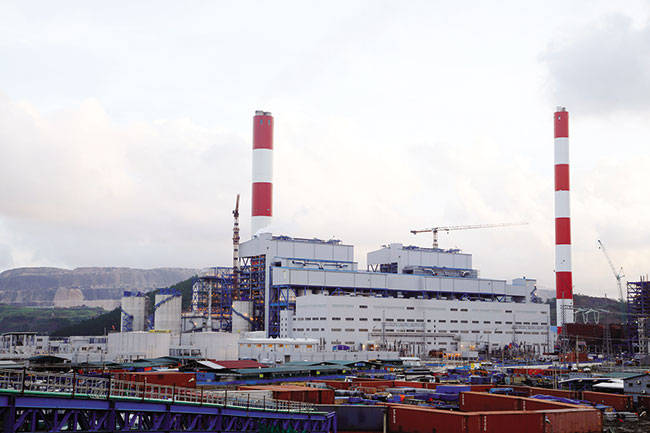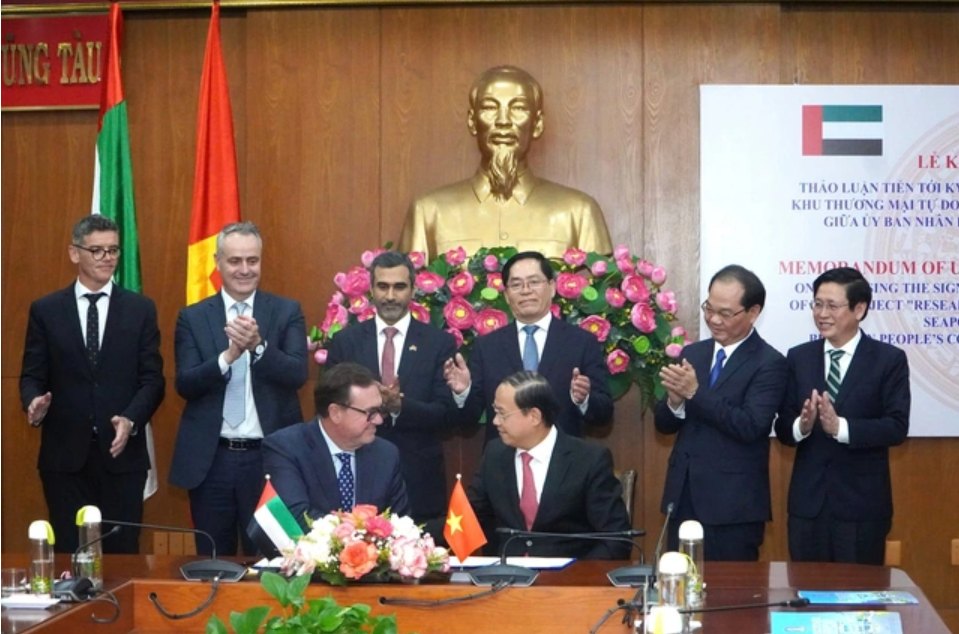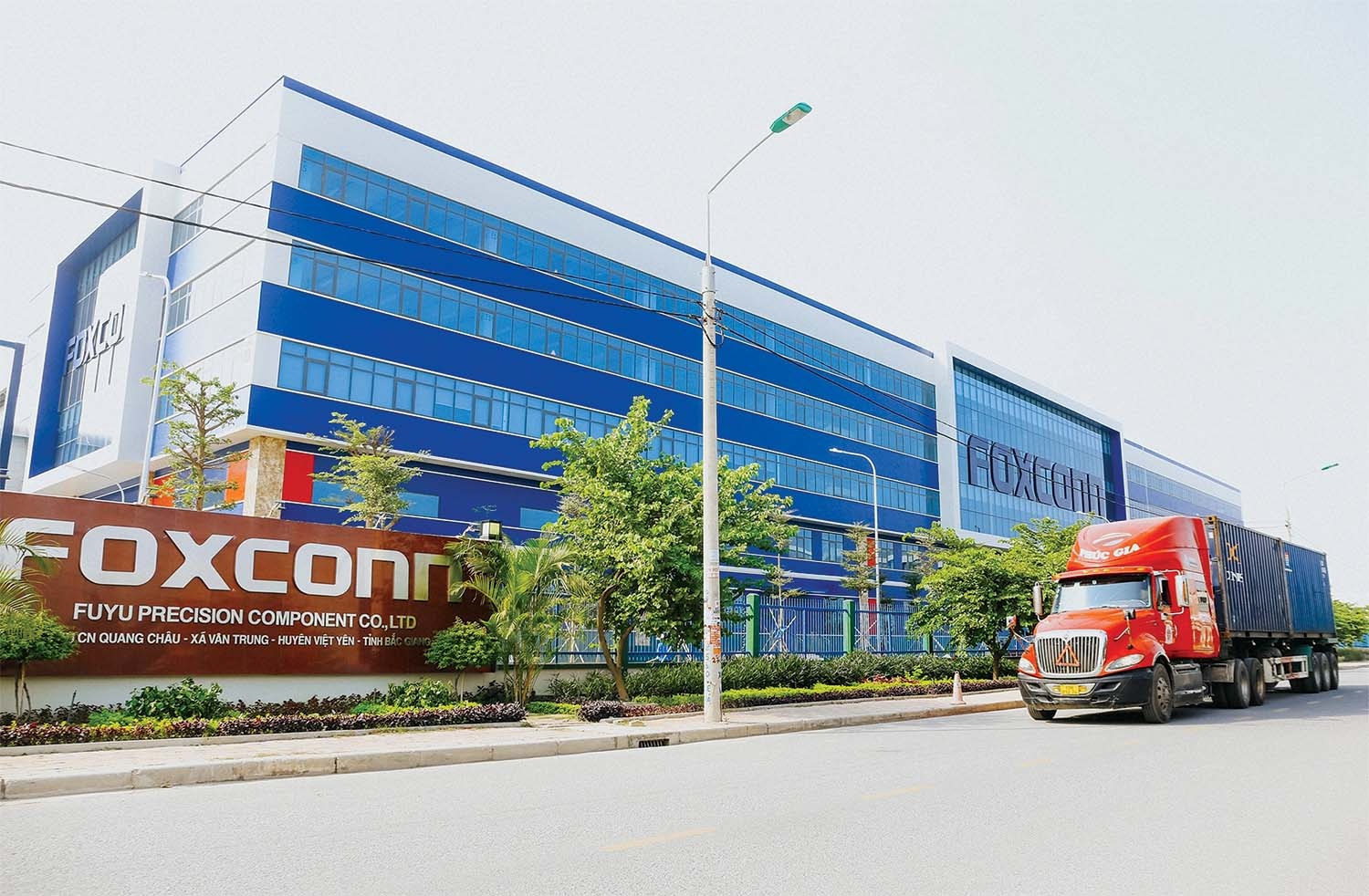New plants power up grid

A series of upcoming coal-fired power plants are set to ease the strain on the national power grid
Last week, AES-VCM Mong Duong Power Company Limited held a ceremony to mark the successful operation of the Mong Duong 2 build-operate-transfer (BOT) coal-fired power plant, which began full commercial operation in April 2015, approximately six months ahead of schedule.
The Mong Duong 2 power plant is the largest foreign invested power project in Vietnam and the country’s first new private sector power plant to be commissioned in the last ten years. Initiated in December 2010 in the northern province of Quang Ninh, it has two units with the total generation capacity of 1,240 megawatt and the total investment capital of approximately $2.1 billion. The plant was built under a BOT agreement and will be transferred to the government after 25 years. The plant is expected to add more than 7.6 billion kWh of electricity annually to the national power grid.
Deputy Minister of Industry and Trade Cao Quoc Hung hailed the completion of the Mong Duong 2 power plant as a meaningful and important milestone for Vietnam’s power industry.
“The successful completion of this project is a positive move forward, and has once again raised the hopes of boosting power investment under the BOT model,” said Tran Viet Ngai, chairman of the Vietnam Energy Association.
Last month, the consortium of Japan’s Marubeni Corporation and Korea Electric Company started construction on the Nghi Son 2 coal-fired power plant in the central province of Thanh Hoa. The BOT project has the total investment capital of $2.3 billion. The first turbine of the Nghi Son 2 thermal power plant is expected to come online in 2019, and it is scheduled for completion sometime in 2020.
Meanwhile, after several false starts with other partners, the Hai Duong thermal power plant, which is mainly invested by Malaysia’s Jaks Resources, has been brought back on track with the participation of China’s Power Engineering Consulting Group.
In a recent press release, Jaks Resources said, “With the financing secured, we believe there is now a higher likelihood that we would meet the project’s financial deadline of October 31.”
In past years, only seven power plants have been licensed to foreign investors under the BOT model. They are Phu My 3, Phu My 2.2, Mong Duong 2, Hai Duong, Vinh Tan 1, Nghi Son 2, and Duyen Hai 2.
The list of foreign-invested BOT power projects looks set to increase, as several foreign companies are currently in negotiations, or are conducting feasibility studies for developing power plants nationwide, such as South Korea’s Samsung C&T Corporation, India’s Tata Power, Singapore’s Sembcorp Industries, and Thailand’s EGATI.
According to the Vietnam Institute of Energy and the National Centre for Socio-Economic Information and Forecast, Vietnam’s power demand and GDP are expected to grow by 11 per cent and 7 per cent, respectively, over the next five years. The Vietnamese government has plans to increase the country’s installed capacity by more than 60GW over this period.
What the stars mean:
★ Poor ★ ★ Promising ★★★ Good ★★★★ Very good ★★★★★ Exceptional
Latest News
More News
- $2 billion Thai Binh LNG Thermal Power Plant to start construction in September (February 21, 2025 | 14:00)
- Danang prepares role as economic bridge (February 21, 2025 | 14:00)
- No slowdown felt in China+1 FDI strategy (February 21, 2025 | 10:42)
- Vietnam’s opportunities exponentially increasing (February 21, 2025 | 10:36)
- Overseas investment a boon to manufacturing sector (February 21, 2025 | 10:00)
- Chinese investors ahead in new-registered projects (February 19, 2025 | 16:35)
- Railway plans for north set for adoption (February 19, 2025 | 16:29)
- Vietnam revives Ninh Thuan nuclear power project (February 19, 2025 | 14:00)
- Yamato Holdings eyes investments in Vietnam's logistics and transportation sector (February 18, 2025 | 17:47)
- Temu eyes ASEAN as US tariff pressure mounts (February 18, 2025 | 11:16)











 Mobile Version
Mobile Version